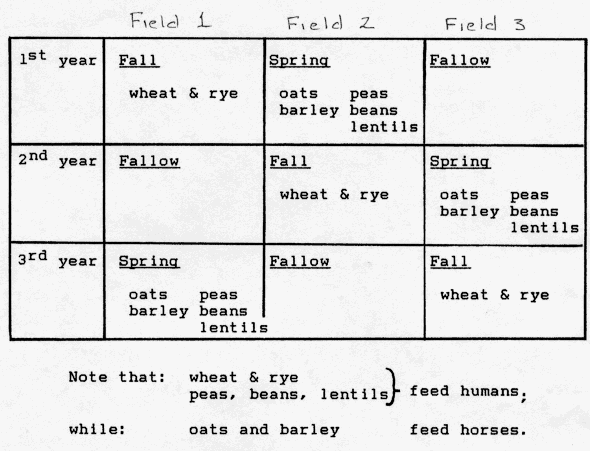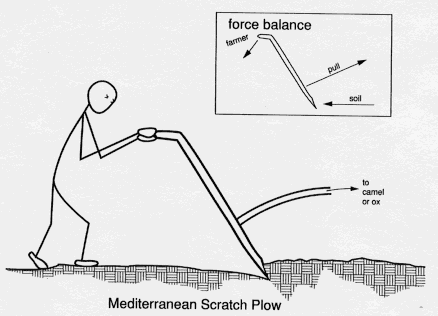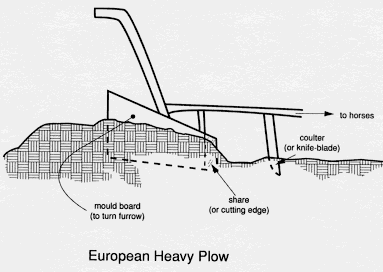Three Field Crop Rotation
Today, we learn how the horse was put to work. The University of Houston's College of Engineering presents this series about the machines that make our civilization run, and the people whose ingenuity created them.
Western Europe was a pretty primitive place until a few centuries after the death of the Roman empire. When it emerged as a new civilization, it did so because medieval engineers developed water and wind power and ultimately did more with it than the Romans had ever done with slave power.
But this had to wait until European agriculture became productive enough to support towns with masons and artisans -- people who did more than just labor for food. And that in turn required a more powerful beast than the plodding ox to pull plows through the heavy wet Northern European soil. It required that the horse be integrated into European farming.
Horses were bred in great numbers for military use in Europe from the middle of the 8th century on; but three things made it hard to use them for farming. Their hooves became soft and easily hurt in damp soil. When they were harnessed in an ox yoke, their wind was cut off by any heavy load. And the horse needed a better diet than an ox -- it couldn't just graze grass, it had to have protein.
The nailed horseshoe and the horsecollar solved two of these problems when they were introduced in the 9th century. The solution to the problem of feeding the horse was more complicated, but it also followed in the 9th century. The solution went like this:
Ninth-century farmers used two fields -- one active at a given time, and the other one idle (or fallow). This kept them from robbing the soil of nutrients and leaving it unproductive. Then someone found that a field could be used two years out of three if it were planted with one crop in the fall and a different crop in the spring, a year and a half later.
This meant farmers had to break their holdings into three fields -- one to be planted with wheat or rye in the fall, for human consumption; a second to be used in the spring to raise peas, beans, and lentils for human use and oats and barley for the horses. The third field lay fallow. Each year this use was rotated among the three fields. We remember the spring planting in the nursery rhyme:
Do you, do I, does anyone know,
How oats, peas, beans, and barley grow?
The odd thing is that this clever scheme took 200 years to adopt. The horseshoe and the horsecollar where put to use directly. But three-field crop rotation required people to rearrange real estate and to change their social order. For all its potential advantages, it was very hard to implement, and the great rebirth of European civilization that it led to was delayed until the 11th century.
But that sort of thing is no surprise to us -- we face the social problems of adapting to technological change every day.
I'm John Lienhard, at the University of Houston, where we're interested in the way inventive minds work.
(Theme music)
White, L., Jr., Medieval Technology and Social Change. New York: Oxford University Press, 1966.
See also Episodes 540 and 571 for more recent thinking about the origins of agriculture.
This episode has been revised and expanded as Episode 1318.

Three-Field Crop Rotation Schedule



Sketches by John Lienhard

(From the 1832 Edinburgh Encyclopaedia)
A Typical Early-19th-Century Version of the Medieval Heavy Plow